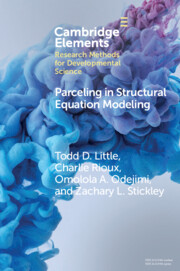Element contents
Parceling in Structural Equation Modeling
Published online by Cambridge University Press: 07 July 2022
Summary
- Type
- Element
- Information
- Online ISBN: 9781009211659Publisher: Cambridge University PressPrint publication: 28 July 2022
References
- 10
- Cited by



